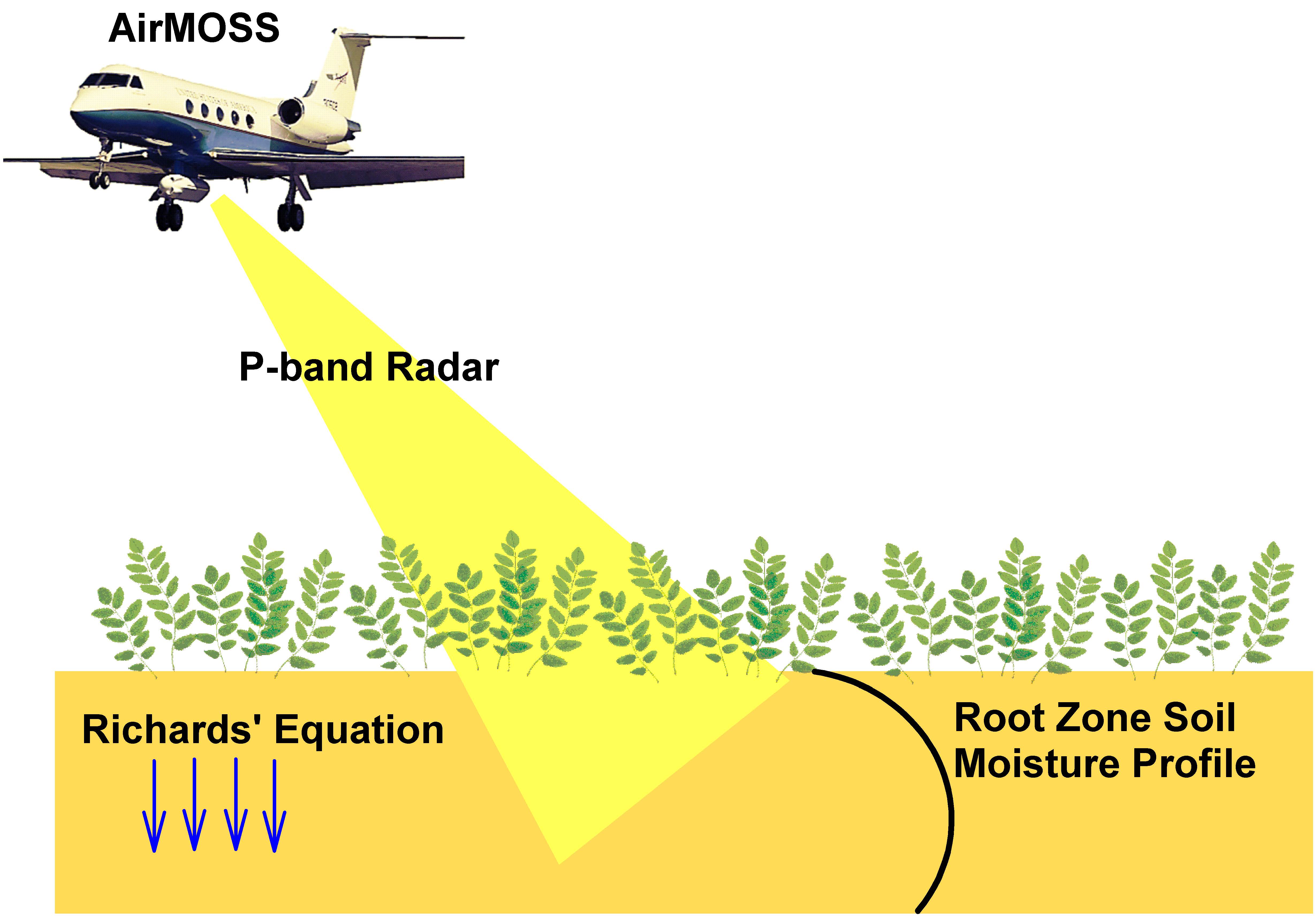P-band radar remote sensing applied during the Airborne Microwave Observatory of Subcanopy and Subsurface (AirMOSS) mission has shown great potential for estimation of root zone soil moisture. When retrieving the soil moisture profile (SMP) from P-band radar, a mathematical function describing the vertical moisture distribution is required. Because only a limited number of observations are available, the number of free parameters of the mathematical model must not exceed the number of observed data. For example, a second order polynomial that contains 3 free parameters was presumed based on in-situ SMP data. The polynomial is currently parameterized based on 3 backscatter observations provided by AirMOSS (i.e. one frequency at three polarizations of HH, VV and HV). In this paper, a more realistic, physically-based SMP model containing 3 free parameters is derived based on a solution to Richards’ equation for unsaturated flow in soils. Evaluation of the new SMP model based on both numerical simulations and measured data revealed that it exhibits greater flexibility for fitting measured and simulated SMPs than the currently applied polynomial. It is also demonstrated that the new SMP model can be reduced to a second order polynomial at the expense of fitting accuracy.

